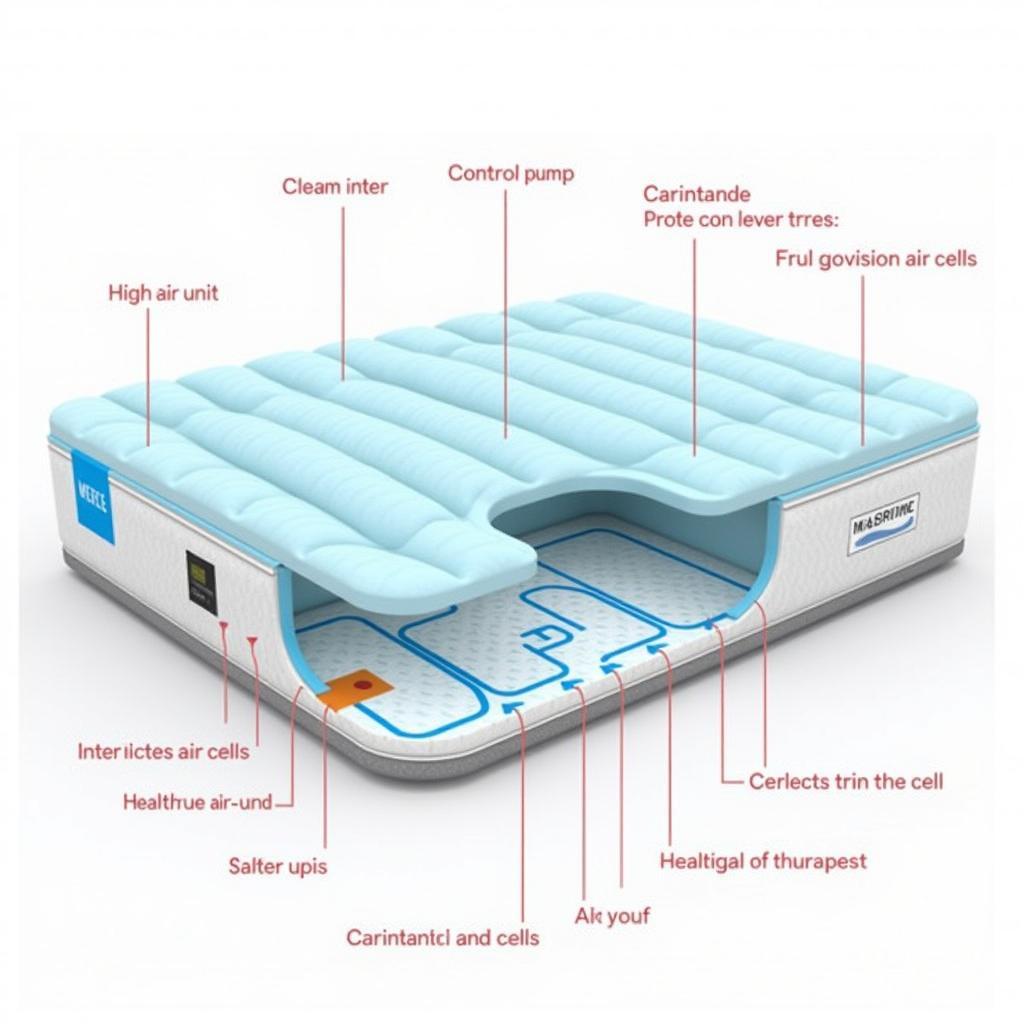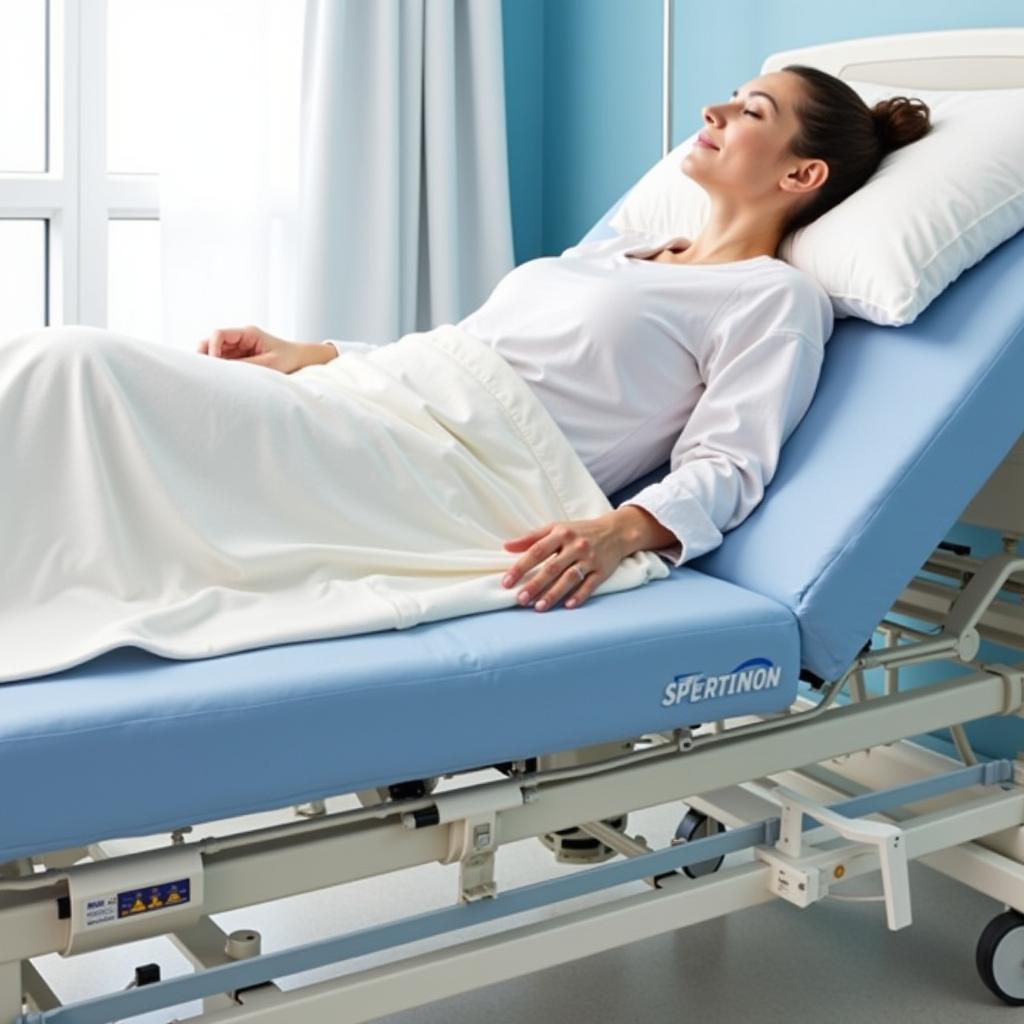An air loss mattress for a hospital bed is a specialized mattress designed to prevent and treat pressure injuries (bedsores) by distributing body weight evenly and reducing friction and shear. These mattresses use a system of interconnected air cells that inflate and deflate to constantly adjust to the patient’s body, providing superior comfort and support. For patients confined to bed for extended periods, choosing the right mattress is crucial for their well-being. Let’s delve into the benefits and considerations of air loss mattresses.
Understanding the Importance of Air Loss Mattresses
Pressure injuries, also known as bedsores, are a significant concern for patients who spend prolonged periods in bed. These sores develop when constant pressure restricts blood flow to the skin and underlying tissues. Air loss mattresses play a vital role in minimizing this risk by providing a dynamic support surface that continually adjusts to the patient’s body, promoting better circulation. Choosing the right hospital bed mattresses is an important decision for both patients and caregivers.
How Air Loss Mattresses Work
Air loss mattresses work on the principle of low air loss therapy, which uses a pump to circulate air through numerous interconnected air cells within the mattress. This constant airflow helps to regulate temperature and moisture, creating a microclimate that is conducive to skin health. The air cells also distribute the patient’s weight evenly, reducing pressure points and minimizing the risk of pressure injuries. Understanding the mechanics of how an air loss mattress functions helps one appreciate its benefits.
These mattresses offer a significant upgrade from traditional hospital bed mattresses, particularly for patients at high risk for pressure injuries. The constant airflow feature distinguishes them from standard air bed hospital mattress options, offering enhanced comfort and pressure relief.
 Air Loss Mattress Diagram
Air Loss Mattress Diagram
Key Benefits of Using an Air Loss Mattress
Air loss mattresses provide numerous benefits for bedridden patients, including:
- Superior Pressure Relief: The dynamic nature of the air cells ensures consistent pressure redistribution, minimizing the risk of pressure ulcers.
- Enhanced Comfort: The adjustable air pressure allows for personalized comfort levels, promoting better sleep and relaxation.
- Improved Circulation: By reducing pressure points, these mattresses promote better blood flow to the skin and underlying tissues.
- Temperature and Moisture Control: The constant airflow helps regulate temperature and humidity, preventing excessive moisture buildup and reducing the risk of skin breakdown.
- Ease of Use: Most air loss mattresses are easy to set up and adjust, making them convenient for both caregivers and patients.
Choosing the right air loss mattress can significantly improve the quality of life for patients dealing with mobility challenges. Finding the best mattresses for hospital beds is essential for ensuring optimal patient comfort and care.
Choosing the Right Air Loss Mattress
When selecting an air loss mattress for a hospital bed, consider the following factors:
- Patient’s Weight and Size: Ensure the mattress can adequately support the patient’s weight and body size.
- Risk Level for Pressure Injuries: For patients at higher risk, consider a mattress with more advanced features, such as alternating pressure.
- Budget: Air loss mattresses vary in price, so it’s important to find one that fits your budget.
- Features: Look for features such as adjustable firmness, low air loss therapy, and alternating pressure.
 Patient on Air Loss Mattress
Patient on Air Loss Mattress
“A good quality air loss mattress can significantly improve a patient’s comfort and overall well-being, especially for those who are bedridden or have limited mobility,” says Dr. Amelia Hernandez, a specialist in geriatric care. She further adds that “The prevention of pressure sores is paramount in these situations, and an air loss mattress provides the ideal solution.”
Maintaining Your Air Loss Mattress
Proper maintenance can prolong the life of your air loss mattress and ensure its effectiveness:
- Regular Cleaning: Clean the mattress surface with a mild detergent and water according to the manufacturer’s instructions.
- Check for Leaks: Regularly inspect the mattress for any signs of leaks or damage.
- Proper Inflation: Maintain the appropriate air pressure as recommended by the manufacturer.
If you’re looking for a specialized mattress for pressure sore prevention, hospital air mattress for bedsores offers a range of suitable options. Investing in a high-quality waterproof hospital bed mattress can also contribute significantly to hygiene and patient comfort.
Conclusion
An air loss mattress for a hospital bed offers numerous advantages for patients requiring extended bed rest. By promoting pressure relief, enhancing comfort, and improving circulation, these mattresses significantly contribute to better patient outcomes. Choosing the right air loss mattress involves carefully considering the patient’s individual needs and the specific features offered by different models.
 Different Air Loss Mattresses
Different Air Loss Mattresses
FAQs
- How often should I clean an air loss mattress?
- Can an air loss mattress be used at home?
- What is the difference between an air loss mattress and an alternating pressure mattress?
- How long do air loss mattresses typically last?
- Are air loss mattresses covered by insurance?
- What is the weight capacity of a typical air loss mattress?
- How do I adjust the firmness of an air loss mattress?
For further reading, explore our articles on air bed hospital mattress and best mattresses for hospital beds.
Need assistance? Contact us at Phone Number: 02437655121, Email: [email protected] or visit us at: 298 Cau Dien Street, Minh Khai Ward, Bac Tu Liem District, Hanoi, Vietnam. We have a 24/7 customer service team.